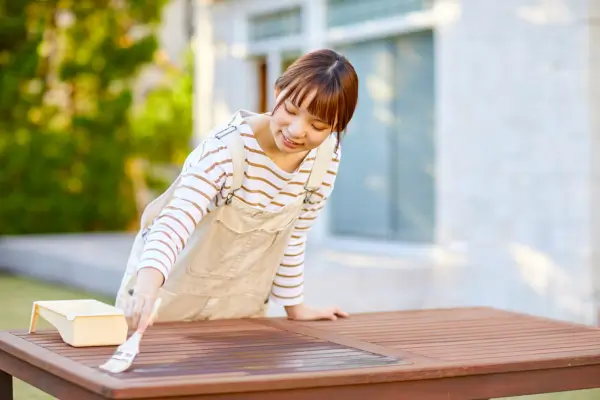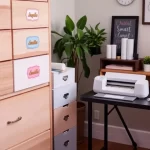If you’re searching for how to make a wooden phone stand, this guide will walk you through a simple, low-cost, and beginner-friendly project.
A wooden phone stand is more than just a craft.
It’s a practical item that holds your phone upright on your desk, nightstand, or kitchen counter.
Whether for video calls, watching recipes, or scrolling hands-free, it adds function and charm to any space.
The best part? You can make it from leftover wood with only a few tools.
Let’s dive in.
Why Make a Wooden Phone Stand?
This is one of the easiest woodworking projects for beginners.
It requires very little material and takes less than an hour to build.
You’ll end up with a durable, stylish piece that’s both useful and decorative.
It’s also a great way to reuse scrap wood from other DIY projects.
You can personalize your phone stand with paint, varnish, or custom engravings.
And since it’s handmade, every piece is unique.
Materials and Tools You’ll Need
You don’t need a workshop or expensive equipment.
Here’s a basic list of what to gather:
- One piece of hardwood or plywood (approx. 15 cm x 10 cm)
- Medium and fine-grit sandpaper
- Hand saw or jigsaw
- Pencil and ruler
- Wood glue (optional)
- Wood stain, wax, or paint (optional)
You can also use clamps, a small vise, or a wood file if available.
Choose wood that’s at least 2 to 3 cm thick to ensure stability.
Simple Wooden Phone Stand Designs to Try
There are a few beginner-friendly designs you can start with.
Each one is practical, easy to make, and highly customizable.
1. Slotted Cross Design (X-Style)
This model uses two identical pieces of wood that slide into each other to form an “X” shape.
Each piece has a vertical notch—one from the top, one from the bottom.
When assembled, they create a freestanding base.
You can add a small angled groove at the top of the front piece to hold the phone.
It’s foldable, portable, and ideal for minimal setups.
2. Angled Block with V-Groove
This version is made from a single wooden block with an angled base and a “V”-shaped groove on top.
The base is cut at a 60° angle, allowing the phone to tilt backward slightly.
A shallow groove carved on top holds the phone securely.
This design is compact, modern, and perfect for desks or nightstands.
3. Flat Base with Horizontal Slot
This is a simple flat piece of wood with a groove cut across its top surface.
The slot should be about 1 cm deep and angled slightly (10°–15°) to lean the phone backward.
It’s ideal for use in the kitchen or on worktables.
You can personalize it easily with color, engraving, or paint.
Step-by-Step: How to Make a Wooden Phone Stand
Let’s go deeper into how to build the angled block version — it’s stylish, durable, and beginner-friendly.
Step 1: Cut the Wooden Block
Start with a piece of wood around 15 cm long, 8 cm wide, and 3 cm thick.
Use a hand saw or jigsaw to cut a clean rectangle.
If your wood is too thin, you can glue two pieces together.
Step 2: Create the Angled Base
On the bottom edge, measure and mark a 60° angle.
Cut along this line so the base sits at a tilt when placed on a flat surface.
This angle allows your phone to rest comfortably when inserted later.
Step 3: Carve the V-Groove
Use a pencil to mark the centerline of the top face.
Draw a groove about 1 cm wide and 1 cm deep in the shape of a “V”.
Use a wood file, chisel, or rotary tool to carve it carefully.
Make the rear side of the groove slightly deeper than the front to support the phone’s weight.
Step 4: Sand Smooth
Use medium-grit sandpaper to smooth all edges and surfaces.
Then finish with fine-grit paper, especially around the groove.
The surface should feel smooth to the touch, with no splinters or sharp edges.
Step 5: Apply Finish (Optional)
You can finish your piece with:
- Natural wood wax
- Mineral oil
- Clear varnish or paint
Allow everything to dry fully before using or selling it.
Final Look
The result is a compact, stable stand that works with any smartphone.
It’s simple, elegant, and perfect for daily use or as a thoughtful handmade gift.
Finishing Options and Personalization
After building your phone stand, you can add creative finishing touches.
Here are some ideas to elevate the design:
- Apply a glossy or matte varnish
- Use wood-burning tools for patterns or initials
- Paint it with bright or pastel colors
- Wrap the base in leather or felt
- Add rubber pads underneath for grip
These details add personality and increase perceived value.
Safety Tips and Best Practices
Even for small projects, safety is essential.
- Clamp your wood securely when cutting
- Always cut away from your body
- Use protective gloves when sanding or staining
- Work in a well-ventilated area when applying finishes
Take your time and follow each step carefully.
How to Sell or Gift Your Wooden Phone Stand
This type of product has great potential for small-scale sales.
It’s useful, attractive, and easy to reproduce in batches.
You can sell on online marketplaces, at craft fairs, or offer it as part of a gift set.
Tips for selling:
- Use good lighting to photograph the product
- Offer personalized engraving for customers
- Bundle it with phone accessories
- Package it nicely in paper or cloth bags
- Add a handwritten note for an artisan touch
With just a few stands, you can start building a micro business.
Final Thoughts
Learning how to make a wooden phone stand is a rewarding and practical introduction to woodworking.
You create something useful with your hands, using just a few basic tools.
It’s a low-risk, high-impact project that’s perfect for hobbyists, gift-givers, or aspiring small business owners.
Once you build your first stand, you’ll likely want to make more — and maybe even sell them.
So pick your design, gather your tools, and start crafting.



